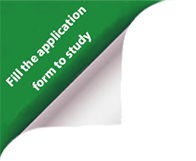Man has long dreamed of flying like a bird. After several centuries of more or less successful attempts, he fulfilled this dream and designed an airplane. However, in order to be able to pilot it safely, in addition to quality training, it also needs the help of dispatchers and modern equipment that navigate it. But why can birds, unlike humans, do without this help? This was the focus of researchers from the Faculty of Forestry and Wood Sciences of the Czech University of Life Sciences in Prague and the German University of Duisburg-Essen.
Pilots agree that the most difficult thing is to land on the water. The landing manoeuvre is difficult to control and coordinate the speed, distance and slope of the descent, which is extremely difficult above the water surface, where there are no landmarks. Because waterfowl mostly fly in flocks, the landing course must also be followed - a chaotic landing would lead to serious collisions and injuries.
Although the direction of the wind is clearly one of the main indicators of the direction of landing, for aerodynamic reasons, the question arises as to what gives the birds a landing course during no wind. Monitoring of more than 3,000 flocks of 14 different species of waterfowl confirmed that in windless or light breeze, birds prefer to reach the water surface in the north-south axis. At the same time, it does not matter at all where the birds came from above the water. The influence of the position of the Sun could be ruled out, because the observations took place at different times of the year, in 8 different countries of the world, at different times of the day and even under cloudy skies. Thus, the most probable explanation was the interpretation that birds orient themselves according to the Earth's magnetic field. This hypothesis is confirmed by the authors' observations of bird landings in Canada and southern Botswana, where there is a significant magnetic declination (i.e. the deviation of the magnetic pole from the geographic pole). Here, too, the magnetic field provided a better explanation of the landing course than the position of the Sun.
It was also found that the birds do not change inclination of their head when landing. Because the current hypotheses are based on the fact that the magnetoreception of birds is located in the retina of the eye and birds (if they fly north or south) see this direction in the form of a kind of spot (similar to seeing a shadow if we have the sun in our backs), it can be assumed that the perception of the magnetic field allows birds to control the angle of descent. Birds are thought to ensure that the "magnetic shadow" projected on their retina remains, i.e. is seen, at a point relative to where the horizon is projected on their retina. The use of such a "retinal-magnetic inclinometer" would explain why birds hold their heads relatively straight and in a constant position when landing. But this is still just a hypothesis and the mystery of animal magnetoreceptors is still waiting for the final unravelling.
Different research shows us independently that the information provided by the magnetic field can be used not only for navigation during long flights and migrations, as has been shown in carrier pigeons, migratory birds, salmon and sea turtles. The magnetic field and its perception allows to follow the direction of digging tunnels of underground mammals, indicates the direction of grazing cattle and deer, synchronizes the movement of carp in vats, helps foxes "calculate" the direction, height and length of the jump when mouseping.
Although we are not aware of the magnetic field ourselves, this does not mean that we do not subconsciously perceive it and that it does not affect us. The same view is shared by Kary Mullis (1993 Nobel Prize winner for the discovery of the polymerase chain reaction), who wrote to our researchers in response to their discovery of magnetoreception in cattle and deer: "I want to assure you that studying magnetic fields is not useless – it's just not modern yet, but it will be. The electromagnetic force is immensely stronger than gravity, and although we do not perceive it, it is here. And it can carry more information than just 'north' or 'south'.
Ing. Vlastimil Hart, Ph.D.
He has been a patriot of this faculty since the time of his studies at the Faculty of Forestry and Wood Sciences, CULS in Prague. During his engineering and doctoral studies at FLD, but also after his completion, he worked for his alma mater - first as a technical worker of the dean's office, then as an assistant professor at the Department of Game Management and Wildlife Biology and currently as its head. In addition, he has many scientific works to his credit, the most recent of which deals with fluctuations in the intensity and polarity of the Earth's magnetic field affecting the behaviour of dogs.
Prepared by: Kateřina Swólová

